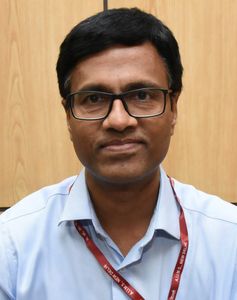Dr M. Srinivas, the newly appointed director of the All India Institute of Medical Sciences, comes across as the quintessential topper. A man of humble origins, Srinivas started in a Kannada medium school and later became an MBBS gold medallist. In an interview with THE WEEK, the 56-year-old talks about what makes AIIMS India’s best hospital. Excerpts:
Q What sets AIIMS apart?
A AIIMS Delhi is a one-of-a-kind national medical institute. It has a long history, and the foundations are solidly built to promote patient care, research and training.
AIIMS stands out because it provides quality care with the best standards to the poorest of the poor. Over the years, owing to the hard work of all the AIIMS family members, the institute has gained international recognition.
Q Tell us five things other hospitals can learn from AIIMS.
A We maintain the highest standards in affordable patient care and promote research―we keep research at the forefront. We also make it a point to ensure close coordination between various medical specialities.
AIIMS is equipped with excellent infrastructure and state-of-the-art equipment. The institution always acts proactively. We take the lead in times of national emergencies and ensure smooth health care coordination.
Q People with low income avoid medical care because of the expense. How can we ensure health equity?
A The Ayushman Bharat initiative is a big step towards ensuring health equity and AIIMS Delhi is actively contributing [to it]. Affordable initiatives from the private sector are also required so that quality health care may be provided to people from the remotest corners.
Q How can we change the way we run hospitals―be it administration, infrastructure or enhancement of efficiency?
A I think a multi-pronged approach is required. It has to focus on the principles of good governance, employee satisfaction, infrastructure support, manpower management and background resources.
Q Primary health care is ailing. How can we strengthen our primary health centres?
A While I agree that there is a lot to be done to strengthen primary health care in India, I do not agree that it is ailing. Many initiatives have been taken under the National Health Mission to strengthen PHCs and these are showing results. But these are works in progress. Most of these initiatives are related to increasing inputs, strengthening human resource, and using technology to deliver and monitor services and programmes. We are also gradually expanding the range of services provided at these centres in terms of elderly care, mental health services, eyes/ENT services, etc.
The areas that still need to be strengthened are community engagement and empowerment, as ultimately they must drive primary health care. The other area is the capacity of the district level system to plan, implement and monitor health care. As a result we have a very top down approach to the delivery of health care. This needs to change. We also need to make our facilities patient-centric or patient-friendly. Another area to address would be the provision of primary care in the private sector.
Q Shortage of doctors and the burden of noncommunicable diseases put a strain on hospitals. How do we get out of it?
A Currently, NCDs are a big challenge in terms of death and disabilities as well as in terms of load on the health care system. It is not only because of their large numbers―about 25 per cent of adults are hypertensive and 10 per cent are diabetic―but also because these are lifelong diseases requiring repeated visits to health facilities. Our health systems are used to deliver acute episodic care appropriate for communicable diseases rather than a longitudinal chronic care required for NCDs. It will require better systems of record-keeping, medicine refills, referrals, etc. Also, some of these people, whose access and affordability is still a challenge, will require advanced care.
Another thing to be understood in this context is the concept of team-based care. The shortage of doctors will always be there. We need to learn to do task shifting. What aspects of care provided by doctors can be done by a less-trained person like a nurse? Then shift some burden from nurses to a still lower rung of workers and so on. We need to have a re-look at the human resource and proceed accordingly to plan our professional education system.



